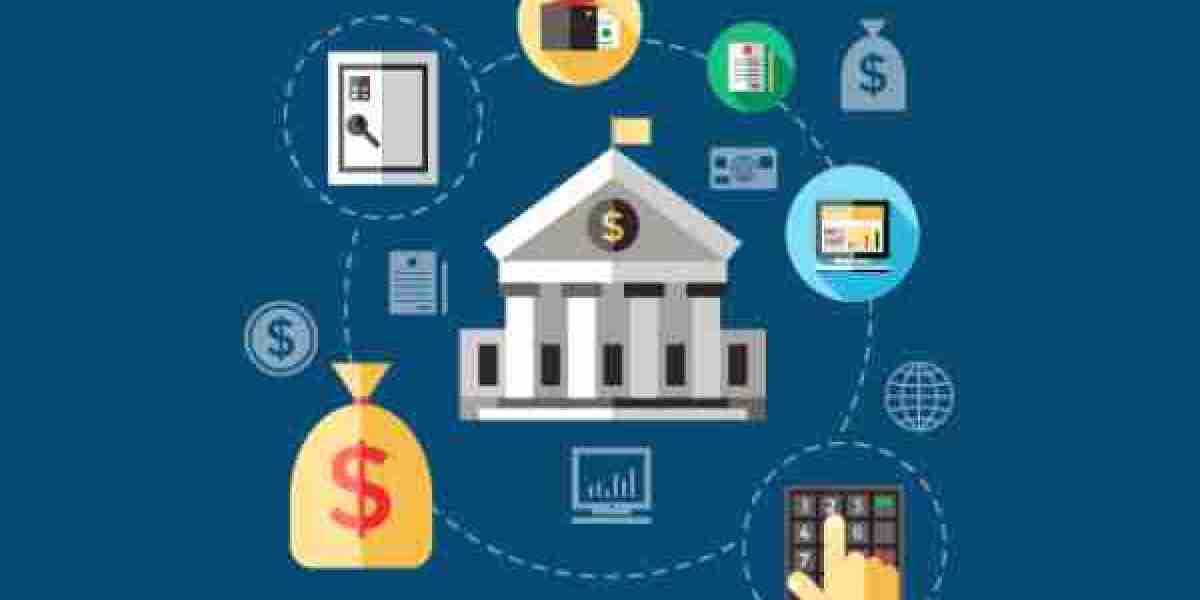The retail banking sector market is undergoing a radical transformation as it embraces emerging technologies to enhance operational efficiency, reduce costs, and improve customer experiences. One of the most significant technological advancements in recent years is blockchain technology, which has the potential to revolutionize various aspects of banking. From improving transparency and security to enabling faster and more efficient transactions, blockchain holds the promise of reshaping the future of retail banking.
In this article, we explore how blockchain technology is being integrated into retail banking systems, the benefits it brings, and the challenges banks face as they adopt this innovative technology.
What is Blockchain Technology?
Blockchain is a distributed ledger technology that securely records transactions across multiple computers in a way that ensures transparency, immutability, and decentralization. Unlike traditional databases, which rely on a central authority to manage and validate transactions, blockchain allows for peer-to-peer transactions without the need for intermediaries. Each transaction is verified by consensus among participants in the network and recorded in "blocks" that are linked together in a chain, ensuring that once data is recorded, it cannot be altered.
In the context of retail banking, blockchain offers several key features that can significantly enhance banking operations:
Decentralization: Eliminates the need for a central authority or intermediary, reducing costs and delays.
Security: Provides robust encryption and transparency, making it resistant to fraud and tampering.
Immutability: Once data is recorded on the blockchain, it cannot be altered or deleted, ensuring integrity.
Efficiency: Streamlines processes by reducing reliance on intermediaries and automating certain tasks.
Blockchain Integration in Retail Banking Systems
1. Improving Payments and Cross-Border Transactions
One of the most promising applications of blockchain in retail banking is in the area of payments, especially cross-border payments. Traditional cross-border transactions can take several days to process and incur high fees due to the involvement of multiple intermediaries, such as correspondent banks. Blockchain can significantly reduce the time and cost associated with international transfers by enabling direct peer-to-peer transactions without intermediaries.
Benefits:
Faster transactions: Blockchain enables near-instant settlement of payments, reducing processing time from days to minutes or even seconds.
Lower costs: By eliminating intermediaries and automating processes, blockchain reduces the transaction fees associated with cross-border payments.
Transparency and traceability: Blockchain’s transparent ledger provides a clear audit trail, allowing both banks and customers to track transactions in real time.
Example:
Ripple, a blockchain-based payment network, has already been adopted by several retail banks worldwide, including Santander and American Express, to facilitate faster and cheaper cross-border payments.
2. Enhancing Security and Fraud Prevention
Fraud prevention and cybersecurity are critical concerns for retail banks. Blockchain’s robust encryption and immutable ledger make it an ideal solution for enhancing the security of financial transactions. Each transaction on the blockchain is recorded and encrypted, and once confirmed, it cannot be changed, ensuring the integrity of financial data. Additionally, blockchain can enable multi-factor authentication and biometric verification, making unauthorized access to banking systems more difficult.
Benefits:
Increased transparency: Blockchain allows for a transparent and traceable record of every transaction, reducing the risk of fraudulent activities.
Immutable records: Once a transaction is recorded on the blockchain, it cannot be altered, preventing fraud and unauthorized changes.
Enhanced authentication: Blockchain can integrate advanced authentication methods, such as biometrics or digital signatures, to further secure access to banking services.
Example:
JPMorgan Chase has implemented a blockchain-based platform, Quorum, to enhance security and ensure data integrity in transactions. This private blockchain solution is designed to facilitate secure transactions and reduce the risk of fraud.
3. Smart Contracts for Automating Transactions
Another area where blockchain is making significant inroads is in the use of smart contracts. A smart contract is a self-executing contract with the terms of the agreement directly written into code. Once predefined conditions are met, the contract automatically executes the specified actions, such as transferring funds or unlocking a loan. This automation streamlines processes, reduces human error, and ensures that both parties adhere to the agreed terms.
Benefits:
Automation: Smart contracts automate routine tasks, such as loan disbursements, insurance claims, and payments, reducing the need for manual intervention.
Efficiency: By automating processes, smart contracts speed up transaction execution and reduce administrative costs.
Trust and compliance: Since smart contracts are executed automatically based on predefined conditions, they reduce the risk of disputes and ensure compliance with regulations.
Example:
Deutsche Bank has experimented with blockchain-based smart contracts to automate processes such as trade settlements and loan origination, enhancing operational efficiency and reducing the risk of errors.
4. Decentralized Identity Management
In the digital age, identity verification is a critical aspect of customer onboarding and transaction security. Blockchain technology can provide a secure and decentralized method of managing digital identities. By storing identity data on the blockchain, banks can provide customers with more control over their personal information while ensuring that it is secure and tamper-proof.
Benefits:
Customer control: Blockchain allows customers to own and control their identity, reducing the risk of identity theft.
Faster onboarding: Blockchain-enabled identity verification can streamline the onboarding process by eliminating the need for multiple identity checks and paperwork.
Data privacy: With blockchain, customers can selectively share their identity data with banks and other institutions, ensuring their privacy is maintained.
Example:
HSBC has explored blockchain technology for digital identity management, allowing customers to verify their identity securely and quickly during the account-opening process.
5. Loyalty Programs and Tokenization
Retail banks can also leverage blockchain to enhance loyalty programs and create new tokenized assets. Tokenization involves converting real-world assets, such as loyalty points or rewards, into digital tokens that can be easily traded, redeemed, or transferred across different platforms.
Benefits:
Increased engagement: Blockchain-enabled loyalty programs provide customers with more flexibility and control over how they use their rewards.
Interoperability: Tokenized assets can be used across different platforms, making it easier for customers to redeem rewards and make transactions.
Transparency: Blockchain ensures that loyalty transactions are transparent and immutable, preventing fraud and misuse.
Example:
Visa has begun exploring the use of blockchain for tokenizing loyalty points, allowing customers to seamlessly transfer points across different merchants and platforms.
Challenges of Blockchain Integration in Retail Banking
Despite the significant advantages of blockchain, there are several challenges to its widespread adoption in retail banking:
1. Regulatory Uncertainty
Blockchain technology is still relatively new, and many governments and regulatory bodies are working to establish clear guidelines for its use in the financial sector. Retail banks must navigate the complex and evolving regulatory environment to ensure that their blockchain initiatives comply with relevant laws and standards.
2. Scalability Issues
While blockchain offers many benefits, scalability remains a significant challenge. As transaction volumes increase, blockchain networks may struggle to process large amounts of data quickly and efficiently. To address this, banks may need to invest in more powerful infrastructure or adopt newer blockchain protocols.
3. Integration with Legacy Systems
Many retail banks still rely on legacy systems that are not compatible with blockchain technology. Integrating blockchain with these outdated systems can be complex and costly, requiring significant investment in both technology and personnel.
4. Security and Privacy Concerns
While blockchain is inherently secure, concerns around privacy and data protection remain. Since blockchain records all transactions transparently, ensuring the confidentiality of sensitive customer data can be challenging. Banks must address these concerns by implementing advanced encryption and privacy-enhancing technologies.
Conclusion
Blockchain technology holds immense potential for the retail banking sector, offering enhanced security, faster transactions, and greater transparency. By integrating blockchain into their operations, retail banks can streamline processes, reduce costs, and offer innovative new services to their customers. However, challenges such as regulatory uncertainty, scalability, and integration with legacy systems must be addressed to fully realize blockchain's potential.




